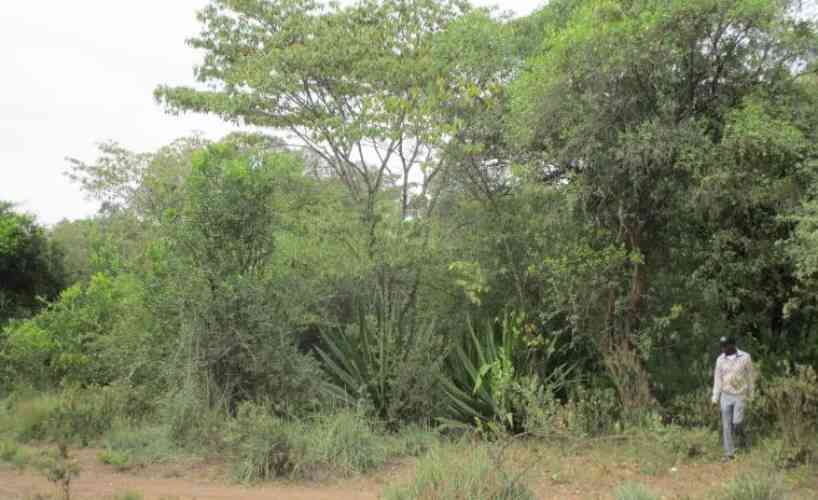For the last few months, the media has been awash with serious allegations of land grabbing, the latest one being the case of a 134-acre parcel of prime land in Karen, Nairobi.
There is cause for worry because this news is coming at a time the country is implementing land reforms.
The allegations also demonstrate our insatiable appetite for land that has driven not only individuals into using any means possible to own land, but has also ensured that land prices are out of reach for majority of Kenyans.
These happenings do not serve to instill confidence in the institutions mandated to facilitate land transactions and safeguard the sanctity of title deeds. Such things will only serve to scare away potential investors.
What caught my attention most, however, was the large size of land involved.
Apparently, the piece of land had been left ‘idle’. This might have attracted interest from enterprising Kenyans, who seemingly had better ideas on what to do with it.
I have also seen several other regions in the country where land has been fragmented into small uneconomic sizes as the owners seek to cash in on high demand.
These two scenarios have compounded the problem of landlessness, joblessness, food insecurity as well as land related conflicts in the country.
During referendum campaigns in 2010, the issue of land sizes featured prominently. Proponents and opponents of the then draft constitution used this to woo voters to their side.
Four years after the constitution was passed, the debate on land sizes is still very much alive and will definitely create a lot of interest among the general public.
Debate on land sizes started during the formulation of the national land policy. Then, the concern was the excessive fragmentation of land into uneconomic units that was being carried out as well as the high number of people who owned large tracts of land and were not utilising them optimally.
The proposal to regulate land sizes in the National Land Policy was meant to encourage equity and to offload excessive land that was not put to productive use.
This same spirit was captured during the drafting of Section 68 of the Constitution, which mandated Parliament to enact legislation to prescribe the minimum and maximum size of land anyone can own.
There are piecemeal efforts by county governments to regulate land sizes within their jurisdictions. The Urban Areas and Cities Act 2012 gives county governments power to regulate minimum land subdivision. The Physical Planning Act Cap 286 also gives the now defunct local governments (read county governments) the powers to regulate minimum land sizes.
According to these pieces of legislation, county governments can formulate zoning regulations for areas under their jurisdiction. It is these laws that counties have been using to ban land subdivision and conversion of land uses.
Stay informed. Subscribe to our newsletter
Parliament in 2012 enacted the Land Act, which mandated the Lands cabinet secretary to commission a scientific study to determine economic viability of minimum and maximum acreage in respect of private land for various zones in the country, within one year. We have not seen anything to this effect, three years down the line.
While the current wrangles between the National Land Commission (NLC) and the Lands ministry may be partly to blame, there is clearly lack of goodwill to come up with a method of determining land sizes, perhaps because of the sensitivity of the matter.
This has therefore, given counties a free hand in exercising the provisions of the Urban Areas and Cities Act 2012 and the Physical Planning Act 1996 without clear justification. Their efforts, nonetheless, have been successfully challenged in the corridors of justice by the landowners as well as other stakeholders.
Socio-economic factors
The main concern has not only been the effects such restrictions would have on the investments, but also the legality of the directives.
This is an indication that regulating land size requires in-depth and wide consultation among all stakeholders.
Regulating land size has not only been a challenge in Kenya, but also in other developed democracies, who somehow managed to circumvent their challenges.
United States, for example, uses the minimum quarter/quarter approach and the sliding scale zoning technique. The quarter/quarter approach means that the minimum land size permitted is 40 acres and the owner can build only one dwelling unit for every 40 acres.
On the other hand, sliding scale zoning technique provides more building rights on smaller units, which are not suited for agricultural farming activities compared to large farms. While these techniques may not have been well founded on empirical data, there have been attempts to link parcel sizes to the country’s national land use policy.
Research on non-farm, agricultural developments that was carried out in Ontario, Canada concluded that socio-economic factors are as appropriate as criteria for determining land sizes. Based on the strength and weight of these factors, minimum land sizes for agricultural farming units were set at 84 acres in Waterloo.
New South Wales, Australia set as a minimum, 96 acres to support full-time farmers and also to curb rapid subdivisions. Spain, on the other hand, used the zoning regulations to come up with three main zones, namely urban, urbanisable and rural.
The requirement is that the minimum size should bring economic returns. This resulted in five to 20 acre parcels of otherwise productive land, which could now support both full and part-time farmers.
Moving closer to home, the Institution of Surveyors of Kenya commissioned a study that revealed that land use, the land tenure system, household sizes and gender, socio-cultural practices, ecology and the level of infrastructure are the main issues that need to be considered when coming up with appropriate land sizes in Kenya.
What is needed is for relevant public agencies to take the lead in coming up with a policy that would address the issue of minimum and maximum land sizes in Kenya.
- The writer is the chairman of the Institution of Surveyors of Kenya (ISK).
 The Standard Group Plc is a
multi-media organization with investments in media platforms spanning newspaper
print operations, television, radio broadcasting, digital and online services. The
Standard Group is recognized as a leading multi-media house in Kenya with a key
influence in matters of national and international interest.
The Standard Group Plc is a
multi-media organization with investments in media platforms spanning newspaper
print operations, television, radio broadcasting, digital and online services. The
Standard Group is recognized as a leading multi-media house in Kenya with a key
influence in matters of national and international interest.
 The Standard Group Plc is a
multi-media organization with investments in media platforms spanning newspaper
print operations, television, radio broadcasting, digital and online services. The
Standard Group is recognized as a leading multi-media house in Kenya with a key
influence in matters of national and international interest.
The Standard Group Plc is a
multi-media organization with investments in media platforms spanning newspaper
print operations, television, radio broadcasting, digital and online services. The
Standard Group is recognized as a leading multi-media house in Kenya with a key
influence in matters of national and international interest.









